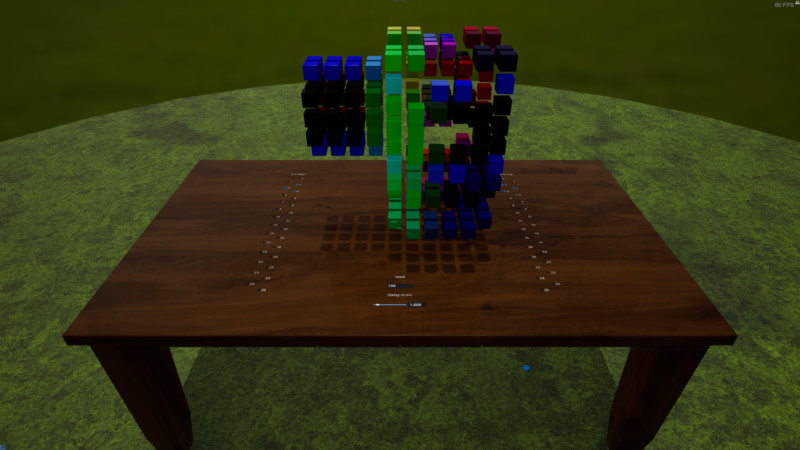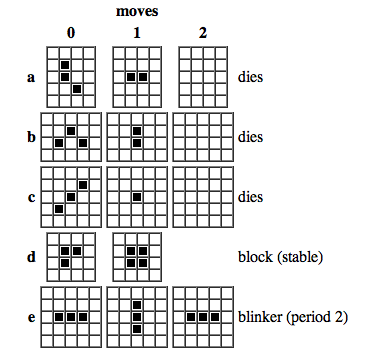

#Conway game of life pulsars free#
(For more about the “Game of Life”, check out the article on Wikipedia and/or some of the free online generators and apps that let you play with it.) This pulsar is a common outcome for many inputs in the game. Later discoveries included other “guns”, which are stationary, and which shoot out gliders or other spaceships “puffers”, which move along leaving behind a trail of debris and “rakes”, which move and emit spaceships.For the nerdy baby (or parents) in your life!īaby blanket with a pattern derived from a 3-period “pulsar” oscillation in John Conway’s cellular-automation game Life. The first has only 10 live cells (which has been proven to be minimal). All three of the subsequent patterns below grow indefinitely: the first two create one “block-laying switch engine” each, while the third creates two.

Smaller patterns were later found that also exhibit infinite growth. A puffer train is a configuration that moves but leaves behind a trail of persistent ‘smoke’. Acorn takes 5206 generations to generate 633 cells including 13 escaped gliders (third).Ī gun is a configuration that repeatedly shoots out moving objects such as the glider. Diehard is a pattern that eventually disappears (rather than merely stabilizes) after 130 generations, which is conjectured to be maximal for patterns with seven or fewer cells (second). Patterns called Methuselahs can evolve for long periods before stabilizing, the first-discovered of which was the F-pentomino (first). The great majority of naturally occurring oscillators are period-2, like the beacon, blinker and the toad (the other three shown here), but periods 4, 8, 14, 15, 30 and a few others have been seen on rare occasions. The pulsar (the first) is the most common period-3 oscillator. These are completely stable (Block, Beehive, Loaf, Boat, and 19x19 and 20x20 maximum-density still life) each generation is identical to the previous. See John Horton Conway: the world’s most charismatic mathematician. Then, when I discovered surreal numbers, I realized that playing games IS mathematics – John Horton Conway. I used to feel guilty in Cambridge that I spent all day playing games, while I was supposed to be doing mathematics. You get surreal numbers by playing games. He is also currently a visiting professor at the City University of New ork’'s Queens College. Conway is currently Professor of Mathematics and John Von Neumann Professor in Applied and Computational Mathematics at Princeton University. He has also contributed to many branches of recreational mathematics, notably the invention of the cellular automaton called the Game of Life. John Horton Conway FRS (born 26 th December 1937) is a British mathematician active in the theory of finite groups, knot theory, number theory, combinatorial game theory and coding theory. The rules should be as simple as possible, whilst adhering to the above constraints.Using a writing head - a construction arm - the machine can construct a new pattern of cells, allowing it to make a complete copy of itself, and the tape) A ‘tape’ of cells encodes the sequence of actions to be performed by the machine. There should be potential for von Neumann universal constructors (these are self-replicating machines the specification defined the machine as using 29 states, these states constituting means of signal carriage and logical operation, and acting upon signals represented as bit streams.There should exist small initial patterns with chaotic, unpredictable outcomes.The rules continue to be applied repeatedly to create further generations.Ĭonway chose his rules carefully, after considerable experimentation, to meet these criteria: The first generation is created by applying the above rules simultaneously to every cell in the seed - births and deaths occur simultaneously, and the discrete moment at which this happens is sometimes called a tick (in other words, each generation is a pure function of the preceding one). The initial pattern constitutes the seed of the system. Any dead cell with exactly three live neighbours becomes a live cell, as if by reproduction.Any live cell with more than three live neighbours dies, as if by overcrowding.Any live cell with two or three live neighbours lives on to the next generation.Any live cell with fewer than two live neighbours dies, as if caused by under-population.At each step in time, the following transitions occur: Every cell interacts with its eight neighbours, which are the cells that are horizontally, vertically, or diagonally adjacent. The universe of the Game of Life is an infinite two-dimensional orthogonal grid of square cells, each of which is in one of two possible states, alive or dead.


 0 kommentar(er)
0 kommentar(er)
